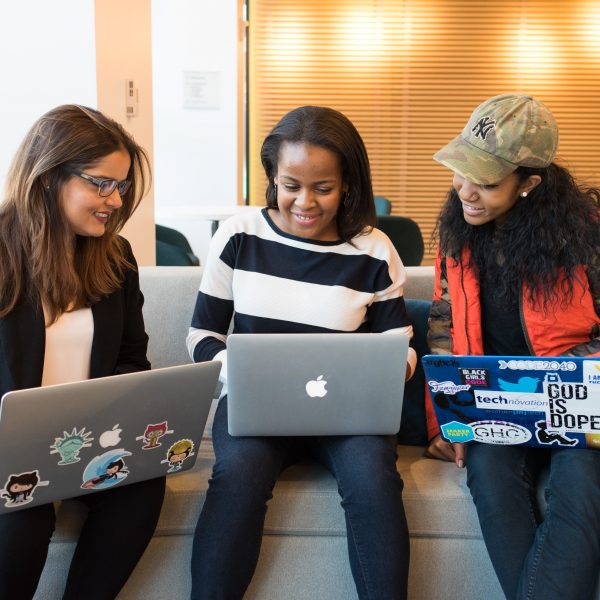Torrens Uni shares 5 Creative & Critical Thinking Activities to help your team innovate

In the piece below, The Sector takes five creative and critical thinking activities prepared by Debra Hunter, Senior Learning Facilitator – Design from Torrens University, and contextualises them to early childhood education and care (ECEC).
The tips, Ms Hunter said, have been prepared to support professionals to channel creative and critical thinking skills into real insights, innovation and “just plain better ways of doing things.”
To foster creative and critical thinking in teams, especially for those leaders who are hoping to build a workplace culture that’s continually evolving ahead of sector and industry needs.
Play with iterative design
One of the most important prerequisites for creative and critical thinking is the security to fail – the psychological safety to have dumb ideas or to chase hunches that don’t pay off.
“You have to let a lot of fuses blow before you get to a lightbulb moment,” Ms Hunter said.
“A great way to demonstrate this to your team is by taking a fun project through quick rounds of iterative design.”
Start with the simple game of Snakes & Ladders. In five-minute development cycles, add new rules and features to the base design (a deck of cards instead of dice? The ability to move other players’ pieces?). After a given set of rounds, play through your “upgraded” version of the game and see what you’ve made.
This activity is even more fun when you split into groups, and try playing each other’s versions at the end of the development process.
Rebuild those connections
“It’s very easy to believe you’re communicating effectively even when you’re not, because things are often much clearer in your head than they are for the person you’re speaking to,” Ms Hunter explained. As mentioned above, instructions can often be inexplicable to end users who weren’t present for their development.
In this activity, designed for a team that isn’t co-located, teams will be sending each other messages and trying to figure out what exactly you’re saying.
To conduct the activity, first, write a list of instructions – things people can do during a Zoom meeting. Feed those instructions into Google Translate, converting them to Italian. Copy and paste the result and translate Italian to German. Then German back to English. Now send them to colleagues and watch them try to interpret the intentions.
There are often invisible hurdles when it comes to communication, especially when working with other teams or even people from different sectors. Talk through some different ways in which communication can be made more clear to audiences who don’t share your particular knowledge, skill sets or backgrounds, such as parents, allied health professionals or politicians.
Expand your circles of meaning
This activity is especially useful for focusing critical thinking skills on a significant project that’s already underway or in planning stages. Working together, the team works collaboratively to answer the question “What does this project/problem mean…”
- To our team?
- To the organisation?
- To the community?
- To the nation?
- To the world?
Teasing out the broader impact and outcomes of a project at this stage can help set a more engaged tone from the beginning, and keep everyone focused on the meaning behind their actions. Overall, this tends to lead to better, more innovative work.
And, of course, if the answer is “Nothing” in the majority of categories, it is worth reconsidering the necessity of the project in question – or how it can be made more meaningful and important.
Show your competitors some love
It is important, Ms Hunter said, to avoid being locked into organisational silo thinking. In this exercise, the team is asked to gather a collection of products or services competitors, and – as a group – talk about what makes them great.
From this base, come up with some ideas to improve those competitor offerings even further. Obviously, the aim is not to share this information with them, but thinking about other competitor offers in a positive way can help to drive each team’s innovation as a matter of course.
Note that there might be a tendency to lean towards being negative about the competition, especially when discussing potential improvements. Leaders should strive to keep the tone positive and constructive, even while polishing the shared critique.
Make it simple. No, simpler.
For some managers, “innovation” sounds like “add more bells and whistles”. But that can be akin to telling an artist to use all the colours or only paint with their most expensive pigments.
This activity will see leaders and teams do the exact opposite. Take one of the elements or aspects of your service provision and strip it back to its most basic form.
In an early childhood context, this may mean exploring a documentation format, the way enrolment enquiries are handled, or how rosters are determined.
If you need some inspiration here, Ms Hunter said, look at the earliest models of the Amazon Kindle compared to their more recent offerings.
“You’ll notice the lack of a physical keyboard, headphone jack and so on… in short, features that users didn’t really need. Apply the same thinking to your chosen (service), and see how simple you can make it while still retaining the essence of the thing.”
For more ideas about inspiring innovation and creativity, see here.
Popular

Workforce
Quality
Research
When did it start to go wrong?
2025-12-18 08:00:46
by Fiona Alston

Economics
Provider
Quality
Jobs News
Policy
Practice
Workforce
The year in review: 2025's most impactful ECEC news stories and shifts
2025-12-16 07:32:18
by Fiona Alston

Quality
Provider
Workforce
Practice
Celebrating 10 years of workplace excellence as the sector’s leading Employer of Choice
2025-12-19 07:00:09
by Fiona Alston














